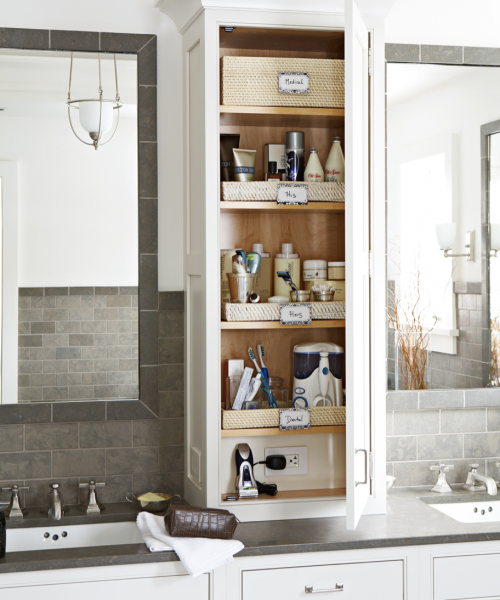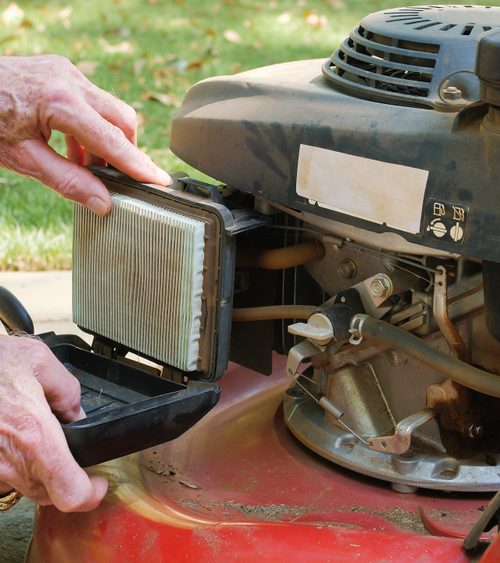By Leah Chester-Davis and Viveka Neveln | BHG.Com
Troy Warren for CNT #HomeGarden
Though these chemicals help prevent you from slipping, they can harm your plants and lawn. Here’s what you need to know to avoid damage to your yard.
Love it or hate it, winter usually brings snow and ice to most parts of the U.S. That means you’ll have to take some action to keep your sidewalks and driveway from getting dangerously slick. Once you’ve cleared the snow, sprinkling some rock salt on your front steps and walkway might be tempting to melt any remaining ice, but this product can damage both turf and landscape plants when it washes into nearby soil. While a de-icing product might be necessary in harsh winters, using no more than the recommended amount, along with a few other strategies, can help minimize yellow lawns and injured plants.
Types of De-Icing Products
A number of ice melt products are available, some of which work better at lower temperatures than others and have different degrees of harmfulness to plants. The most popular ones contain different types of salts (chlorides). There are four main types, including sodium chloride, also known as rock salt ($7, Target). It’s inexpensive, but it only melts ice when temperatures are 12˚F or higher and it doesn’t take much of it to damage plants, vehicles, and concrete.
You may also see magnesium chloride ($15, The Home Depot), often marketed as pet-friendly and effective down to 5˚F. It can be a safe option when applied at about 1-2 pounds per 100 square feet. Potassium chloride (also called muriate of potash) is more commonly sold as a fertilizer than a de-icing product, though you may see it mixed with other chloride-based melting agents in de-icing products. It’s best not to use the fertilizer for de-icing because it’s easy to overdo it and damage your plants. The least harmful de-icing agent to the landscape is calcium chloride ($20, The Home Depot) which works at the lowest temperatures (down to -25˚F) of all the chloride-based products.
Products containing calcium magnesium acetate, such as MELT EB ($23, The Home Depot) aren’t chloride-based, and are less corrosive to surfaces and have low toxicity for plants, but they tend to be more expensive. This chemical is also only effective at melting ice in temperatures 20˚F or warmer.
Whichever product you choose, always follow label directions to ensure you use the correct amount for the area you need to cover. Adding more than you need won’t get the job done any faster, and the less ice melt in the environment, the better for you, your plants, and pets.
Minimizing Damage from De-Icing Products
If you’re only dealing with a few slick spots that are likely to melt away as temperatures rise during the day, you may be better off using coarse sand or another abrasive, such as sawdust ($6, Tractor Supply Co.) instead of a de-icing product. They will provide traction on slippery surfaces but won’t help melt ice. Or you can combine less than 5% of a de-icing product with a skid-proofing substance, such as sawdust, sand, kitty litter ($9, Target), fine gravel, or straw. For example, 1 pound of de-icing salt mixed with 50 pounds of sand can be effective on walks and driveways without adding too much salt to the landscape. The salt helps melt the ice, while the other material will help keep a surface safe after the salt has dissolved. Stick with recommended amounts to minimize harmful effects on plants, concrete, and other surfaces.
Another strategy when dealing with snow and ice is to try to avoid shoveling or piling treated snow onto your landscape, as much as possible. When the weather warms, the thawing of the snow and winter rain can dilute salts and reduce accumulation in the soil, but if early spring weather is dry, rinse off plants to eliminate residual salt and run irrigation to help flush salts from the soil.
Sometimes salt spray from passing cars ends up on your landscape along a roadway. To protect sensitive turf or other nearby plants, you can provide a barrier, such as burlap wrap or snow fencing. You can also select plants that are more salt-tolerant. Species that have hidden or submerged buds, thick surface wax, numerous and tightly arranged bud scales, fuzzy buds, or sticky resin coated buds are more capable of protecting themselves from salt spray.
In Other NEWS




































